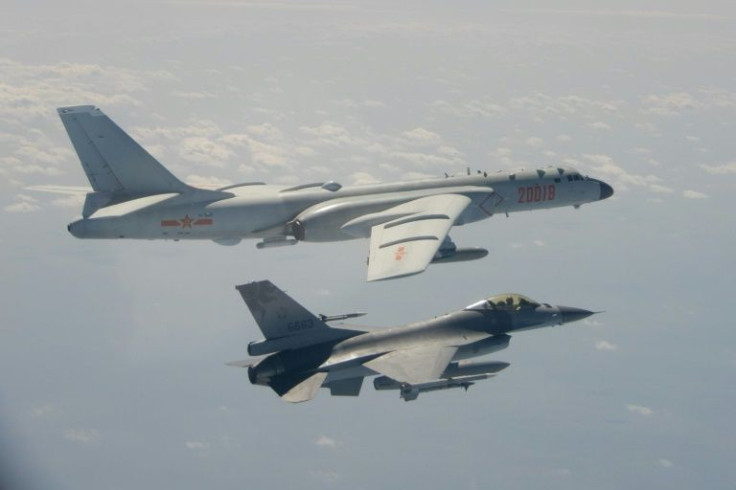PLA 'Trump Card' J-16D Electronic Attack Jet Enters Taiwan's Buffer Zone For The First Time
KEY POINTS
- Analysts believe the jet's appearance near Taiwan shows that it is combat-ready
- The J-16D can jam enemy’s communication systems and give confusing signals
- J-16D can reportedly outshine U.S. Navy's EA-18G Growlers electronic attack jets
China's new J-16D jet, an electronic warfare fighter, was spotted for the first time in Taiwan's Air Defense Identification Zone (ADIZ) on Monday, triggering panic in the self-ruled island.
The People's Liberation Army (PLA) aircraft is capable of electromagnetic disruptions and deception besides interfering with radar systems at short-range, which means it can make a significant difference during combat, reported South China Morning Post, quoting analysts.
Besides two J-16Ds, eight J-16 fighter jets, two H-6 bombers, and a Y-8 anti-submarine aircraft entered Taiwan's buffer zone Monday.
This was the first time the J-16Ds, which function as both fighter jets and electronic warfare aircraft, made an appearance after its debut at the Airshow China in September. According to analysts, this proves that the aircraft is combat-ready.
According to Zhou Chenming, a researcher from the Yuan Wang military science and technology institute in Beijing, the J-16D could offer "electronic support" to its wing planes.
“The first function of the J-16D is electronic support, such as jamming the enemy’s communication systems. Second is electronic suppression, which is to interfere with the radar of the enemy," he told the news outlet.
Fu Qianshao, a former equipment expert from the PLA Air Force, said China was among the few countries capable of manufacturing such warplanes. "It can take the lead in warfare with electromagnetic suppression … Then the assault group follows in its path to attack the enemy," Fu was quoted by South China Morning Post.
He added that unlike other aircraft with electronic warfare capabilities, the J-16D could protect other planes at a closer range. "Larger transport aircraft or bombers can also be converted to have electronic capabilities, but they can only jam the enemy over a long-range outside the defensive zone," Fu said.
The report also quoted experts who believe the J-16D’s electromagnetic system can create confusing signals for radar, leading to misjudgments from the side being targeted.
According to Chang Yen-ting, a guest professor of National Tsing Hua University in Taiwan, the jet was "PLA's trump card" and could outshine U.S. Navy's EA-18G Growler electronic attack jets.
"The appearance of the warplanes on Monday indicates the start of mass production and the combat readiness of the planes," he was quoted as saying by South China Morning Post.
Chinese state-owned Global Media too reported about the J-16D, taking potshots at Taiwan for failing to post a photo of the jet. "If they cannot make an optic observation, how can they be so sure that all 13 aircraft were real, or no additional aircraft were hidden due to the J-16D's capabilities?" the report quoted an unnamed military expert.

© Copyright IBTimes 2024. All rights reserved.




















